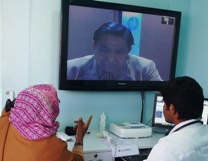
Over 84 per cent of total investments attracted by irrigation sector in India as of FY 2014-15 have remained stuck in various stages of implementation, while all investment projects in irrigation sector in Chhattisgarh and West Bengal have remained stuck the scenario was no different in Gujarat, Andhra Pradesh, Punjab and Jharkhand where almost 99 per cent of such investments have remained stuck, noted a recent sector-specific ASSOCHAM study.
“Of the total 361 live investment projects in irrigation sector in India as of FY 2014-15, 248 projects with investments worth over Rs 4.7 lakh crore have remained stuck in different stages of implementation and out of these 189 projects have reported either time or cost overruns ranging between 1-288 months, while costs have increased by over 61 per cent i.e. by over Rs 2.5 lakh crore of their actual costs of Rs 4.1 lakh crore,” highlighted the ASSOCHAM study titled ‘Irrigation investment in India: Analysis of state-level experiences.’
A whopping 98 per cent of investments attracted by irrigation sector in India come from public sector as private players have shown poor interest in developing the irrigation sector.
“Almost half of the total live investments worth over Rs 5.5 lakh crore attracted by irrigation sector across India as of financial year 2014-15 are concentrated in Telangana (11 per cent share), Andhra Pradesh (10 per cent), Maharashtra & Karnataka (nine per cent) and Madhya Pradesh (six per cent),” noted the study prepared by The ASSOCHAM Economic Research Bureau (AERB).
Investments attracted by irrigation sector across India have grown at a compounded annual growth rate (CAGR) of about 11 per cent during the course of last decade (2004-05 and 2014-15).
“There is an urgent need to reform the current irrigation policy and strategy to further its contribution to agriculture, employment, income and economic growth,” said the chamber’s study. “Such reforms shall gear up the irrigation sector and lead to production optimisation.”
Tamil Nadu has ranked on top with over 32 per cent of CAGR clocked by the states in terms of attracting investments in irrigation sector during the last decade followed by Jammu and Kashmir (25.5 per cent), Chhattisgarh (22.6 per cent), Jharkhand (20 per cent) and Telangana (19 per cent) that are amid top five states in this regard.
Interestingly, Punjab which is also known as the ‘rice bowl of India’ and has significant potential in attracting investments in irrigation sector has ranked 16th amid top 21 states with decadal CAGR of about 10 per cent which is even less than the average growth rate of India (11 per cent).
Investment projects in irrigation sector have recorded maximum delay of 229 months in Jammu and Kashmir followed by Jharkhand (216 months), Bihar (197 months), Uttar Pradesh (195 months) and Kerala (185 months).
Irrigation projects in Maharashtra have recorded maximum share of about 21 per cent in terms of cost escalation followed by Karnataka (18 per cent), Andhra Pradesh (14 per cent), Gujarat (12 per cent) and Telangana (nine per cent).
Within states, Assam has recorded maximum cost escalation rate of about 97 per cent, Jammu & Kashmir and Kerala (95 per cent), Maharashtra (92 per cent) and Uttar Pradesh (87 per cent).
In its study, ASSOCHAM has suggested that all state governments should set up irrigation development authority to look after all projects and ensure their timely completion.
Besides, the government should bring in policy changes to improve efficiencies, encourage accountability, transparency and willingness to promote irrigation development.
“The objective should be to ensure irrigation services are more resource-efficient, responsive to farmer needs and equitable,” suggested the ASSOCHAM study.
It has further recommended for moving away from government controlled institutions to commercially oriented, effective and efficient autonomous service institutions. “The need is to encourage participatory management in irrigation sector, shift from current emphasis on physical expansion to performance improvement, and encourage wider adoption of irrigation equipment by providing incentives.”
Increasing farmer participation for development of irrigation projects by making land acquisition easier is another significant suggestion, highlighted the ASSOCHAM study.







Leave a Reply
You must be logged in to post a comment.